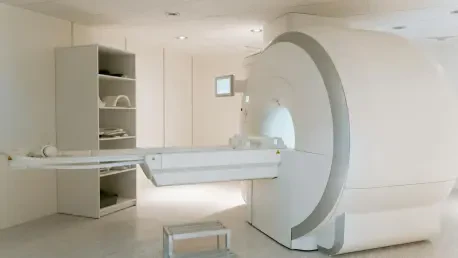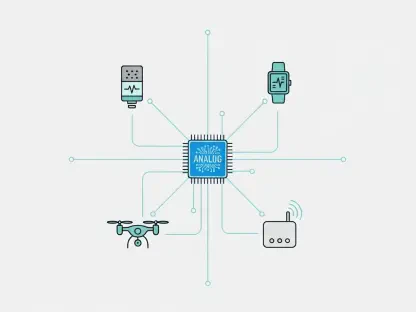Listen to the Article
The rapid advancement of artificial intelligence (AI) in healthcare has sparked a transformative wave, particularly in radiology, where the promise of faster, more precise diagnoses is tantalizingly close yet frustratingly elusive. As patient volumes grow and diagnostic demands intensify, the integration of AI into medical imaging offers a potential lifeline, but its implementation has stumbled over practical and systemic hurdles. A compelling editorial in Radiology, authored by Dr. Eric J. Topol of Scripps Research and Dr. Pranav Rajpurkar of Harvard University, dives deep into this complex dynamic. Their analysis reveals a pressing need to move beyond haphazard collaborations between AI and radiologists, advocating instead for clearly defined roles that capitalize on the unique strengths of each. This approach, they argue, could bridge the gap between technological potential and clinical reality, reshaping how diagnoses are made. With AI adoption in U.S. radiology lagging despite years of anticipation, their proposed framework provides a timely roadmap for enhancing efficiency and accuracy in medical workflows.
Navigating the Challenges of AI Integration
The journey of AI in radiology has been marked by high expectations but underwhelming results, leaving many in the field questioning its true value. Dr. Rajpurkar poignantly describes current efforts as akin to “sprinkling digital fairy dust on broken workflows,” a metaphor that captures the superficial nature of integration attempts that fail to address deeper systemic flaws. Despite the technology’s potential to revolutionize medical imaging, adoption rates in the U.S. remain disappointingly low. Radiologists often find themselves in a bind, torn between skepticism about AI’s reliability and an unintended dependence on its outputs, which can lead to inconsistent diagnostic decisions. This duality of distrust and reliance creates a significant barrier, undermining the seamless partnership that many had envisioned. The editorial highlights that without a fundamental overhaul of how AI is embedded into clinical processes, the technology risks remaining a novelty rather than a transformative tool.
Beyond the issue of trust, the practical challenges of integrating AI into daily radiology practice reveal a landscape rife with inefficiencies. Current systems often lack the synergy needed to truly support radiologists, as evidenced by studies showing limited improvements in diagnostic accuracy when AI is used in real-time. Many healthcare institutions struggle with unclear guidelines on accountability, leaving professionals uncertain about who bears responsibility for errors—human or machine. Economic barriers further complicate the picture, as the costs of adopting AI tools often outweigh the immediate benefits in a system not yet structured to reward such innovation. This creates a vicious cycle where hesitation to invest limits exposure to AI, which in turn stifles the development of trust and expertise among radiologists. Addressing these multifaceted challenges requires more than technological fixes; it demands a rethinking of workflows and incentives to ensure AI complements rather than complicates clinical practice.
Envisioning a Collaborative Future
At the heart of the editorial lies a bold proposal to redefine the relationship between AI and radiologists through a structured separation of roles, leveraging the distinct capabilities of each. AI shines in handling repetitive, data-intensive tasks such as preliminary image analysis or sifting through electronic health records, while radiologists excel in nuanced interpretations that require clinical judgment and contextual understanding. The authors outline three innovative models—AI-First Sequential, Doctor-First Sequential, and Case Allocation—to guide this division. In the AI-First model, for instance, AI takes the lead on initial data processing, allowing radiologists to focus on final decision-making. This approach not only streamlines workflows but also aims to reduce the cognitive burden on professionals, enabling them to dedicate their expertise to the most critical aspects of diagnosis. Such a framework promises a more balanced partnership tailored to real-world clinical needs.
The benefits of this role separation extend beyond mere efficiency, offering a pathway to mitigate the pervasive issues of trust and error in AI-assisted diagnostics. By establishing clear boundaries for when and how AI input is utilized, these models help minimize the risks of over-reliance or outright dismissal of AI recommendations, both of which can skew decision-making. For example, the Case Allocation model triages cases based on complexity, directing routine scans to AI for processing while reserving intricate or ambiguous cases for human expertise. This not only optimizes resource use but also fosters a sense of control among radiologists, who can engage with AI outputs on their terms. Importantly, the flexibility of these models allows healthcare institutions to adapt them dynamically, responding to specific demands or patient scenarios. This adaptability is seen as crucial for creating sustainable, long-term collaboration between technology and human skill in radiology.
Tackling Barriers with Strategic Solutions
Implementing a new framework for AI and radiologist collaboration is no small feat, as it faces significant systemic and psychological obstacles that have long hindered progress. Misaligned incentives within healthcare systems often discourage investment in AI, as the financial returns remain uncertain or delayed, while liability concerns create hesitation about who is accountable for AI-driven errors. Radiologists themselves grapple with cognitive biases, sometimes over-trusting AI suggestions in straightforward cases or dismissing them outright in complex ones, leading to inconsistent outcomes. These barriers are compounded by workflows that lack clarity, making it difficult to integrate AI in a way that feels intuitive or supportive. The editorial underscores that overcoming these challenges requires a holistic approach, addressing not just the technology but also the cultural and structural elements of medical practice that shape its adoption.
To pave the way forward, the authors advocate for actionable strategies grounded in evidence and innovation, ensuring that the proposed models are tested and refined in real clinical environments. Pilot programs are recommended to evaluate outcomes such as diagnostic accuracy, workflow efficiency, and radiologist satisfaction, with transparent reporting to build confidence in the results. Additionally, a clinical certification pathway for AI systems, separate from standard regulatory oversight, is suggested to focus on practical integration into diverse settings. This would involve collaboration among clinical experts and independent bodies to validate AI tools for real-world use. Looking to the future, the development of advanced general medical AI systems—capable of handling broader, more complex tasks—could further transform radiology, though such capabilities are still in progress. These steps collectively aim to turn the vision of role separation into a tangible reality, enhancing patient care through thoughtful collaboration.
Building on Past Insights for Future Progress
Reflecting on the discourse around AI in radiology, the editorial by Dr. Topol and Dr. Rajpurkar provides a pivotal moment of clarity, urging a shift from chaotic integration to deliberate role separation. Their framework, with its emphasis on distinct models tailored to clinical contexts, addresses the disillusionment that had settled over the field after years of unmet promises. The focus on leveraging AI for routine tasks while preserving human expertise for complex decisions resonates as a practical balance, tackling issues of trust and inefficiency head-on. Pilot programs launched in the wake of their recommendations demonstrate early successes in improving workflow efficiency, while discussions around clinical certification gain traction among stakeholders. This groundwork, established through rigorous analysis and transparent dialogue, marks a turning point in how technology and human skill are harmonized in medical imaging.
Moving forward, the next steps involve scaling these insights into broader adoption, ensuring that healthcare systems adapt to support AI integration with clear policies on accountability and funding. Institutions should prioritize iterative testing of the proposed models, adjusting them based on real-time feedback from radiologists and patients alike. Collaboration between technology developers and clinical experts must deepen to create AI tools that evolve with the field’s needs, potentially accelerating the arrival of more sophisticated systems. Additionally, fostering a culture of trust through education and shared outcomes will be vital to overcoming lingering skepticism. By building on the foundation laid in recent years, radiology can continue to refine this partnership, ultimately enhancing diagnostic precision and patient outcomes through a synergy that respects both technological innovation and human judgment.









